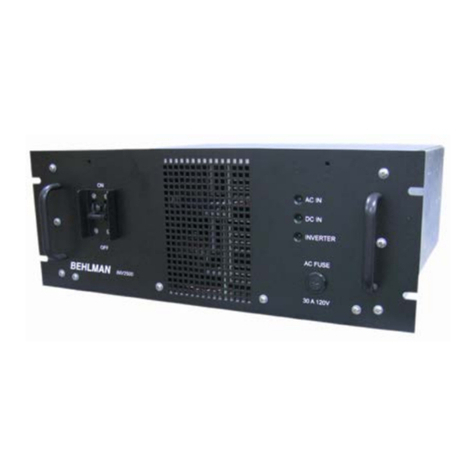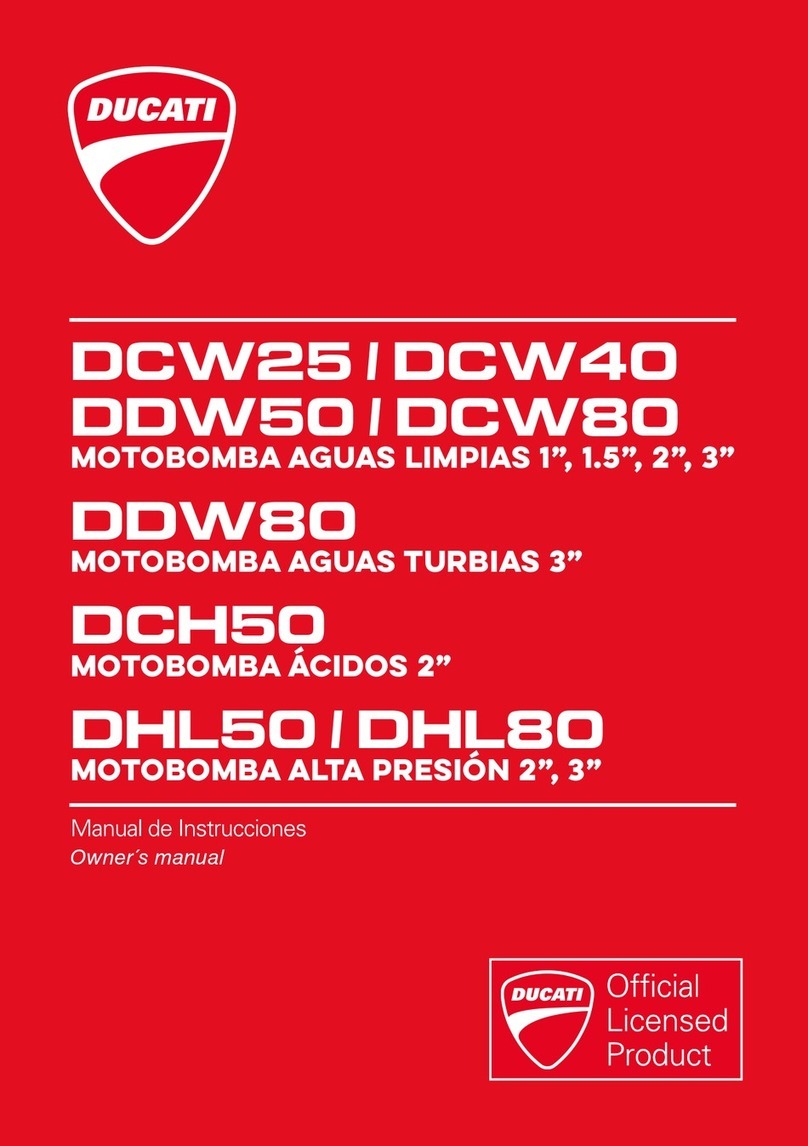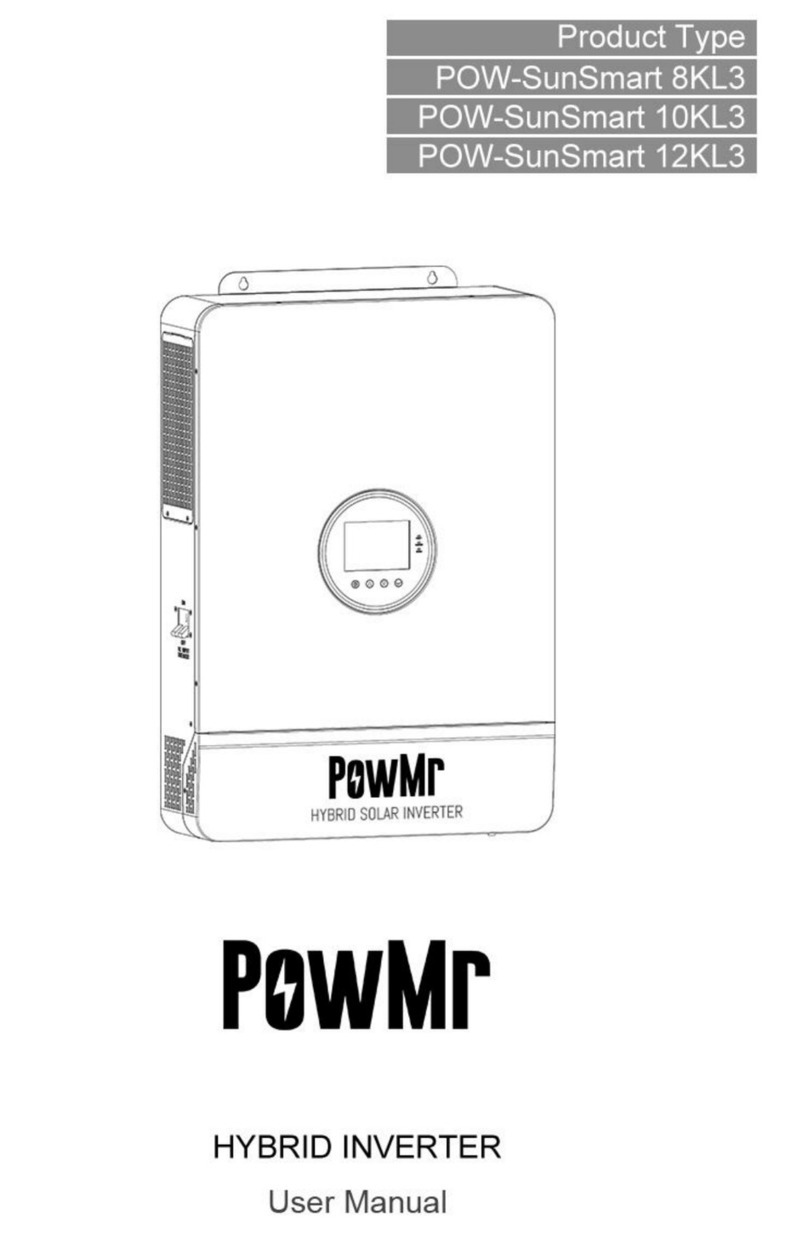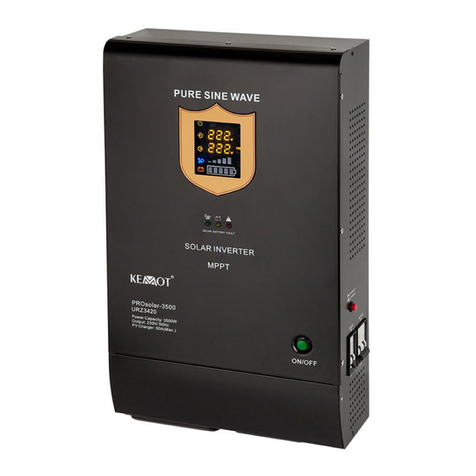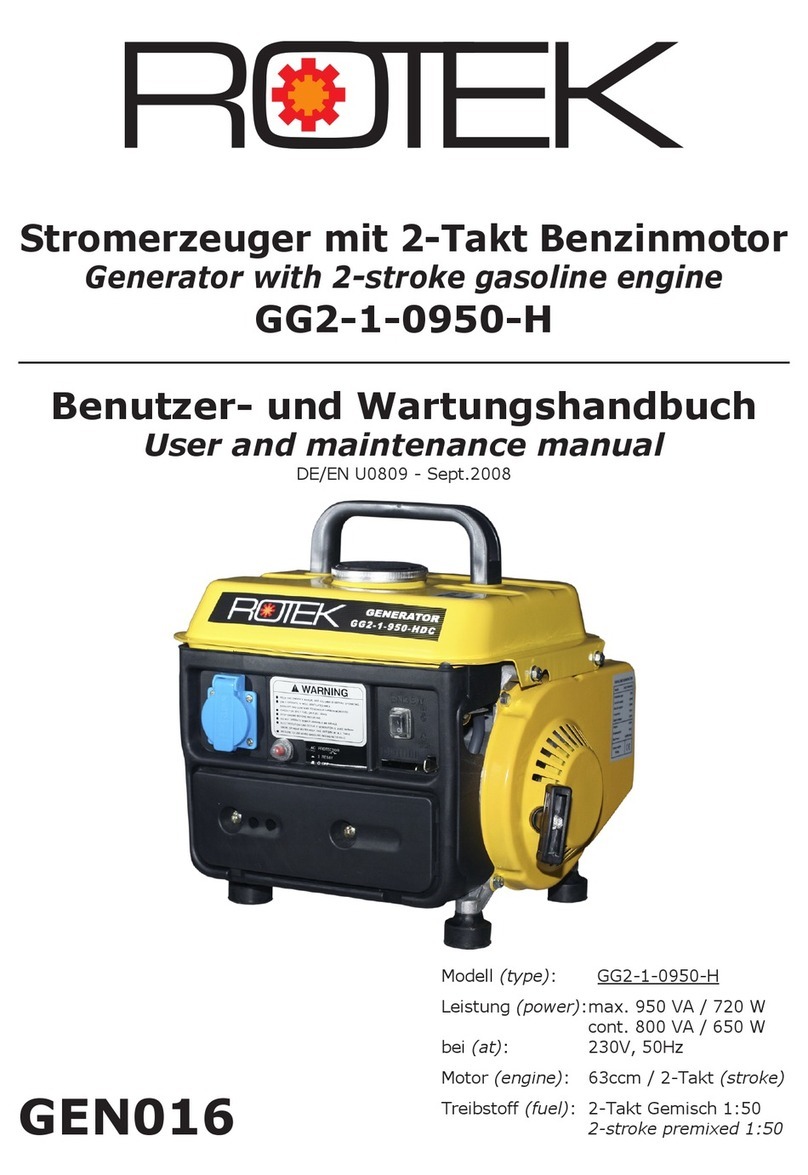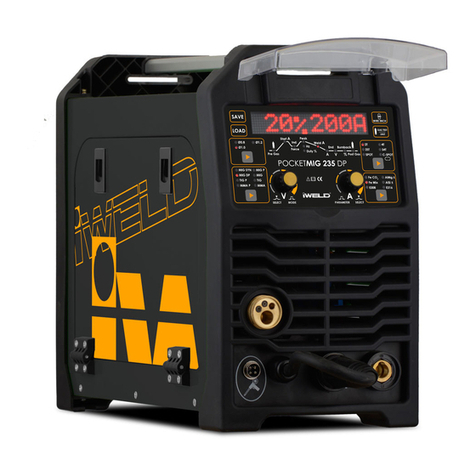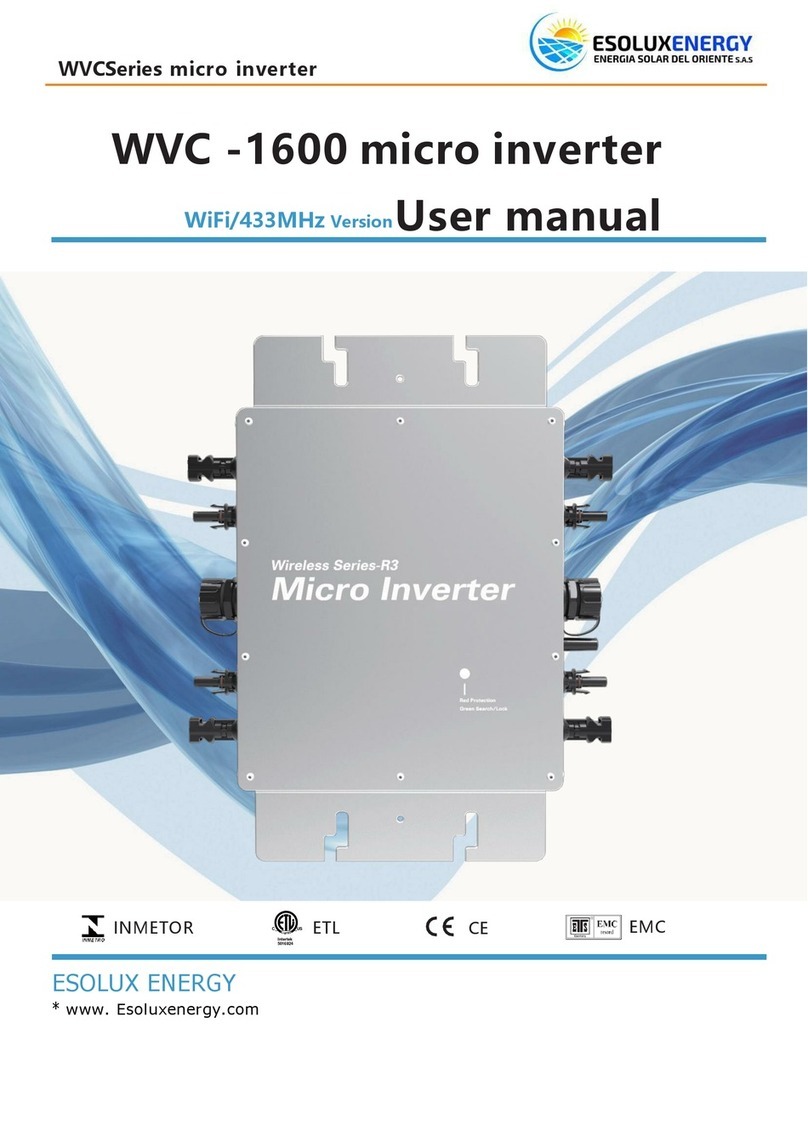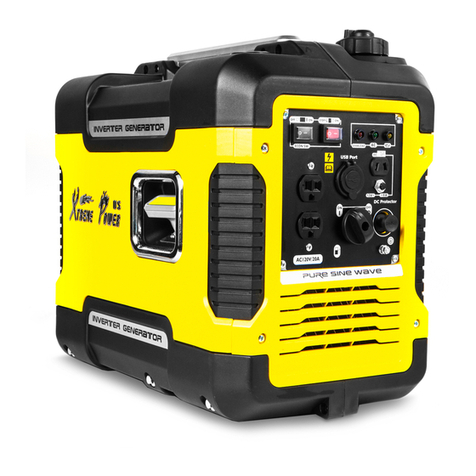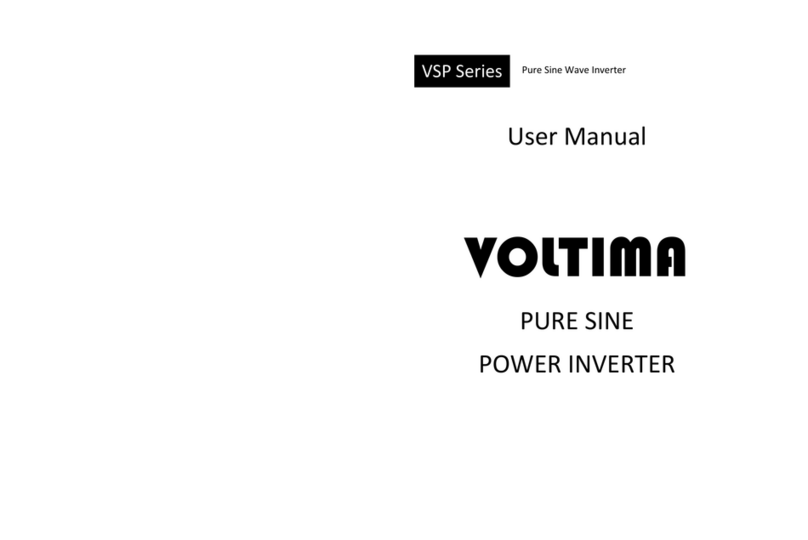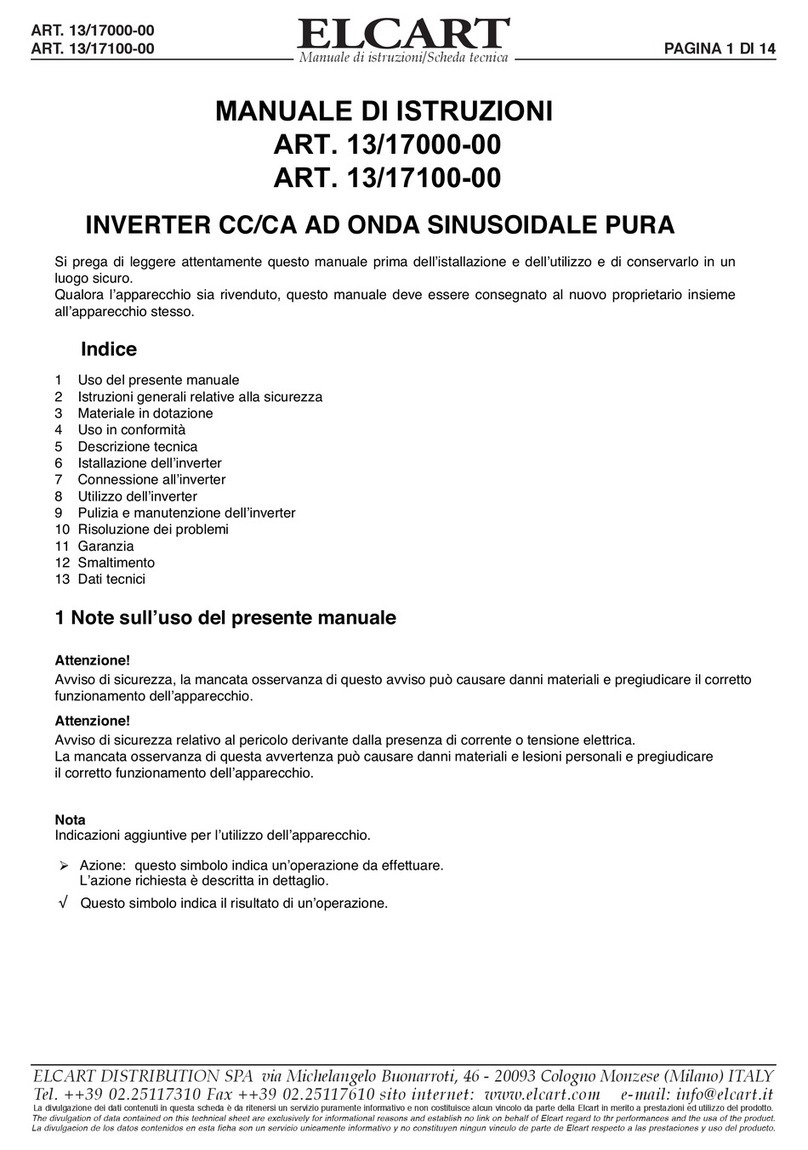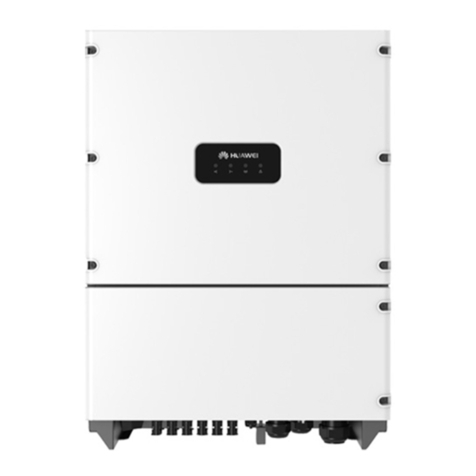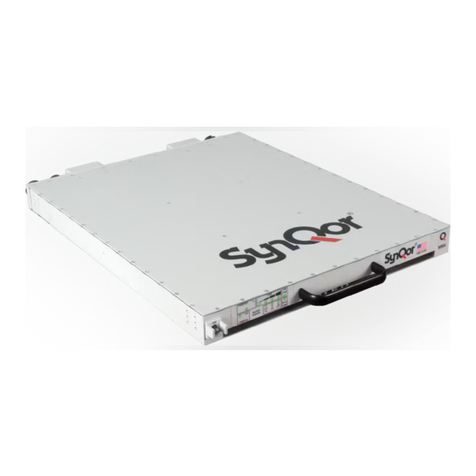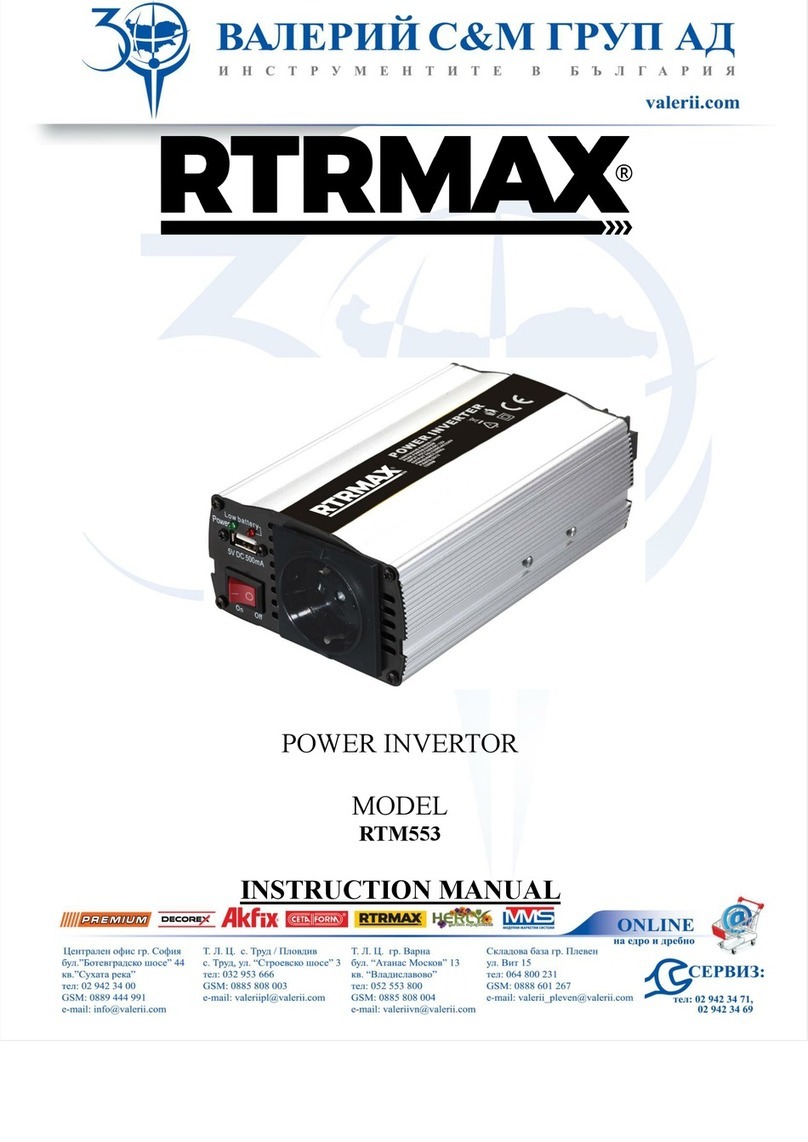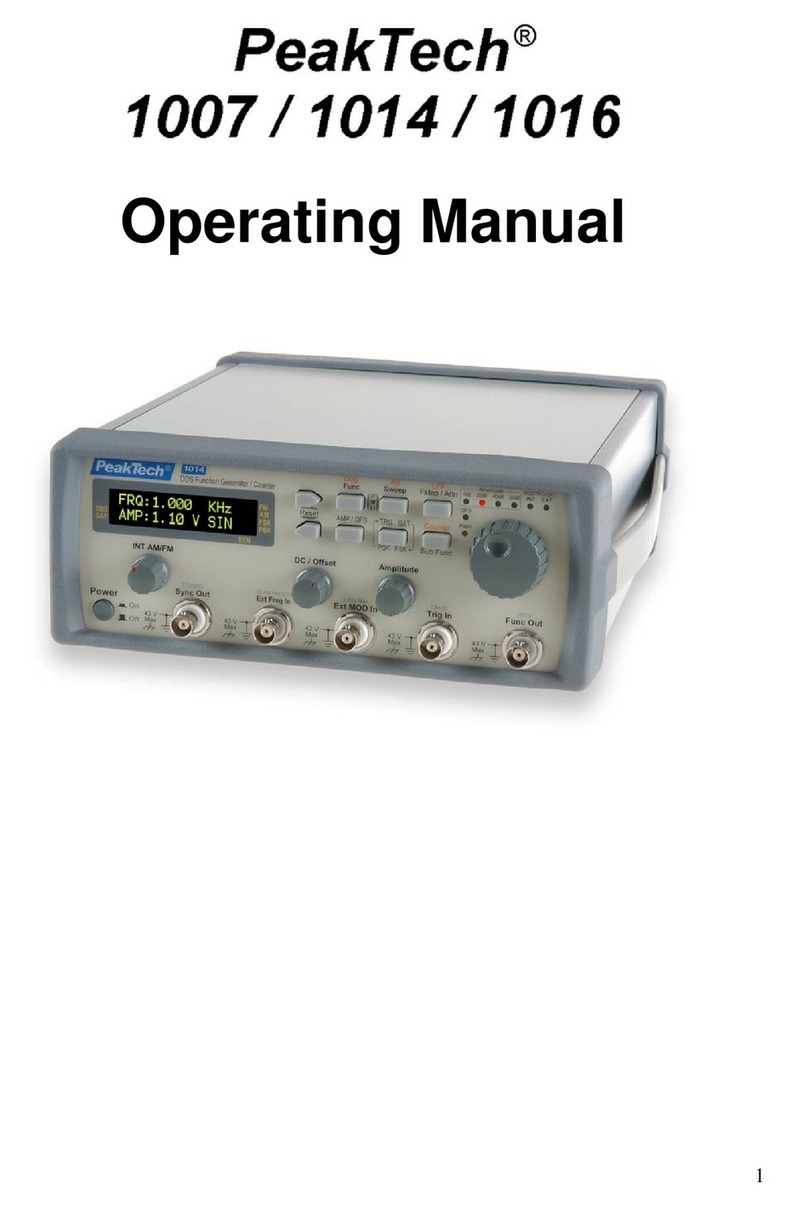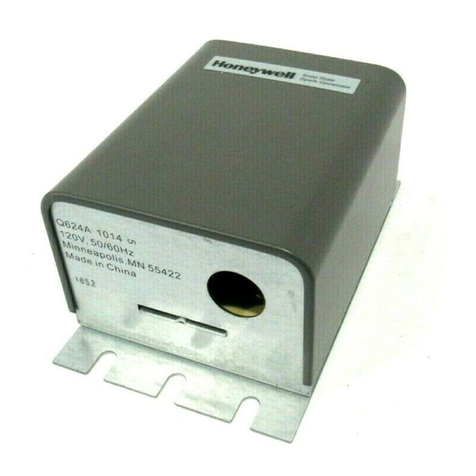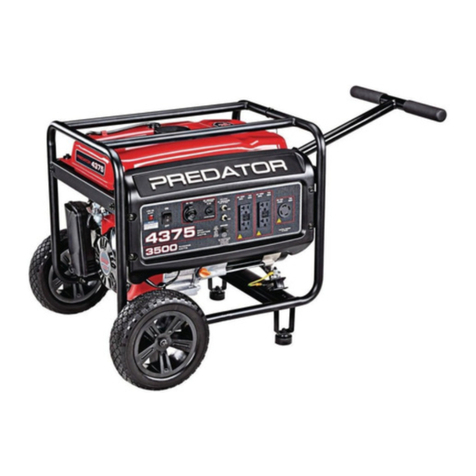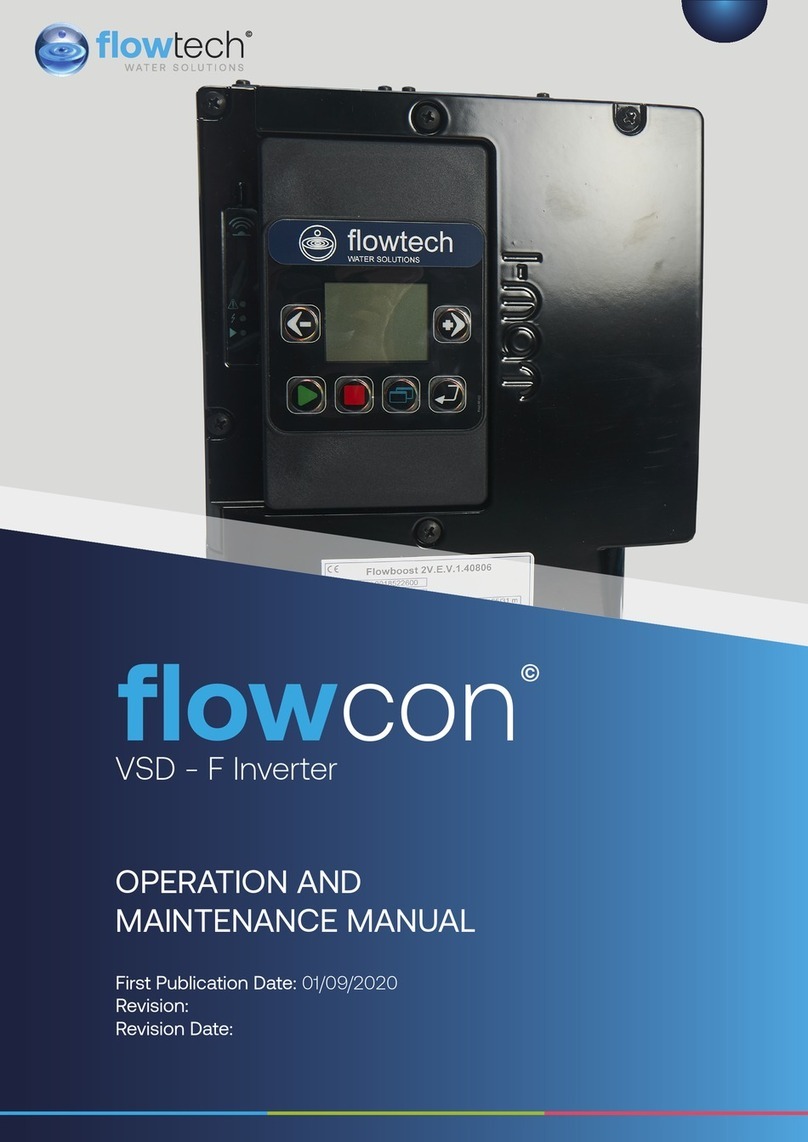BEHLMAN BL5000 Series Use and care manual

USER'S GUIDE AND
TECHNICAL REFERENCE
AC SOURCE
BEHLMAN MODEL BL5000 SERIES
PART NUMBER:______________
MODEL _____________________
FOR SERVICE ASSISTANCE
CONTACT BEHLMAN
CUSTOMER SERVICE DEPARTMENT
PHONE TOLL FREE 1-800-874-6727
OR WRITE
BEHLMAN
CUSTOMER SERVICE DEPARTMENT
80 CABOT COURT
HAUPPAUGE, NY 11788
PHONE: (631) 453-0410
FAX : (631) 951-4341
FOR SALES INFORMATION:
PHONE: (631) 435-0410
USA : (800) 874-6727
FAX : (631) 951-4341
DATE:06/11 REV. C

CLAIM FOR DAMAGE IN SHIPMENT
Under the FOB factory terms of sale, ownership and responsibility are transferred to the customer when the
equipment leaves the factory. Each Behlman equipment is shipped from the factory in proper operating condition.
Immediately upon receiving equipment, unpack and inspect it for evidence of damage incurred in shipment. File
a claim with the freight carrier if the equipment has been damaged in any way or it fails to operate properly. Forward
a copy of the damage claim report to Behlman. Include the model number, serial number and date the shipment
was received. Behlman will advise the disposition of the equipment and will arrange for necessary repair or
replacement.
RETURNING EQUIPMENT TO FACTORY
Do not return equipment to the factory without prior authorization from Behlman.
A RETURN MATERIAL AUTHORIZATION NUMBER (RMA) is required to return equipment.
This equipment, like all precision electronic equipment, is susceptible to shipping damage. It contains heavy
magnetic components as well as delicate electronic components.
If equipment is returned without prior authorization, the shipment will be refused, the customer being liable for all
shipping, handling and repair costs.
When packing for reshipment, use the original shock absorbent material and shipping container to preclude
damage to the equipment.
Insure that the return authorization numbers (RMA) is available on the container for identification.
SHIPPING INSTRUCTIONS
RACK MOUNTED UNITS
1) Box (es) must be double wall with minimum 350 lbs. bursting test.
2) Box (es) must provide for a minimum of 3to 4 inches of clearance around sides, top and bottom of unit.
3) When packing unit, utilize either a foam-in-place system or high density foam. Clearance provided for above
must be completely filled with foam.
FAILURE TO COMPLETELY SECURE UNIT IN BOX WILL ALLOW
MOVEMENT DURING SHIPPING, RESULTING IN DAMAGE.
4) Secure box (es) to pallet (s). This is necessary to insure proper handling and protection during shipping.
5) Place the following warning label on box (es)
DO NOT STACK
6) Ship unit (s) using a freight cargo carrier; air or ground.
CABINET MOUNTED UNITS
Cabinet mounted units require that a special crate be used. The crate should be manufactured of plywood (3/8" or
thicker) and reinforced (using 1 x 3 or larger pine) on all edges. The unit must be firmly secured to the crate’s base.
The crate must be shock mounted to avoid damage during shipping. Detail drawings for Behlman's crates are
available upon request.

WARRANTY CERTIFICATE
Behlman Electronics, Inc. warrants to the original purchaser, for a period of one (1) year from the shipment
from Behlman, each item to be free from defects in material and workmanship. Behlman’s obligation and the
Purchaser’s sole remedy for any breach or violation of this agreement is limited to adjustments, repair or
replacements for parts which have been promptly reported by the Purchaser as having been in its opinion,
defective and so found by Behlman upon inspection. All replacement parts will become the property of
Behlman on an exchange basis. This warranty will not apply if such adjustment repair or parts replacement is
required because accident, neglect, misuse, failure of environmental controls, transportation damage or causes
other than normal use.
If during the warranty period a defect should impair the performance of the unit, Behlman agrees, at its option,
to repair or replace the unit or its defective components F.O.B. Behlman at 80 Cabot Court, Hauppauge NY
11788 or at another Behlman service facility at Behlman’s option. To obtain service under this warranty, the
original Purchase shall notify Behlman at the above address or by telephone at 631-435-0410 and provide
information about the defect or impairment of performance. Behlman with then supply the Purchaser a Return
Material Authorization (RMA) number. This number must be attached to the equipment sent back for warranty
repair. Equipment must be shipped back to Behlman prepaid. No collect shipments will be accepted.
Behlman shall be excused from supplying warranty service if the unit’s case has been open or if the unit has
been subject to unauthorized repair. All service outside the scope of this warranty shall be paid for by the
Purchaser at Behlman’s rates in effect at the time of this repair. Behlman will not perform any repairs outside
of the warranty without written authorization by the Purchaser. If the repair is a warranty repair, Behlman will
ship the unit back to the Purchaser, by a method determined solely by Behlman, prepaid. If the Purchaser
requests, any other means of transportation it shall be at the Purchaser’s expense.
The use of the equipment shall be under the Purchaser’s exclusive management and control. The Purchaser will
be responsible for assuring the proper installation, use, management and supervision of the equipment. Behlman
will not be liable for personal injury or property damage.
The forgoing warranties are in lieu of all other warranties, expressed or implied including without limitation
warranties of merchantability and fitness for purpose.
In no event shall Behlman be liable for loss of profits, loss of use, or any indirect, consequential or incidental
damages. Purchaser agrees that Behlman will not be liable for any damages caused by the Purchaser’s failure
to fulfill any of the Purchaser’s responsibilities set forth herein.

SAFETY SUMMARY
The following safety precautions must be observed during all phases of operation,
service, and operation of this equipment. Failure to comply with these precautions or
with specific warnings elsewhere in the manual violates safety standards associated
with the design and intended use of this equipment.
GROUND THE EQUIPMENT
To minimize shock hazard, the equipment chassis(s) must be connected to an electrical
safety ground. This equipment is supplied with a three conductor line connection for single
phase applications and a five wire connection for three phase applications. Both types
include an earth terminal intended for safety ground connections. In addition, installation
sites may require neutral to earth connections as per NEC section 250 ( National Electrical
Code ). Refer installation to licenced electrician or other qualified personnel.
DO NOT OPERATE IN EXPLOSIVE ATMOSPHERE
Do not operate the equipment in the presence of flammable gases or fumes. Operation of
any electrical instrument in such an environment constitutes a definite safety hazard.
KEEP AWAY FROM LIVE CIRCUITS
Operating personnel must not remove equipment covers. Component replacement and
internal adjustments must be made by qualified maintenance personnel. Do not replace
components with power applied. Under certain conditions, dangerous voltage may exist even
with the power removed. To avoid injuries, always disconnect power and discharge circuits
before touching them.
DO NOT SERVICE OR ADJUST ALONE
Do not attempt internal service or adjustment unless another person, capable of rendering
first aid and resuscitation is present .
DO NOT SUBSTITUTE PARTS OR MODIFY INSTRUMENT.
Because of the danger of introducing additional hazards, do not install substitute parts or
perform any unauthorized modification to this equipment. Contact Behlman Electronics for
proper replacement parts and specific service information.
DANGEROUS PROCEDURE WARNINGS
Warnings will precede potentially dangerous procedures in this manual. Instructions
contained in the warning must be followed.

TABLE OF CONTENTS
BEHLMAN AC SOURCE, MODEL SERIES BL5000
SECTION
1 INTRODUCTION
1.1 General Description
1.2 Options
1.3 Special Units
1.4 Specifications
2 UNPACKING AND INSTALLATION
2.1 Unpacking
2.2 Installation
2.3 Installation and input requirements ( 3 phase power )
2.4 Installation and input requirements ( single phase power )
2.5 Supplemental input protection.
2.6 T5 and T5D options
2.7 Installation Considerations
3 OPERATION
3.1 Controls and Indicators
3.2 To Operate The Equipment
3.3 Shutdown Procedure
3.4 Line Drop Compensation
3.5 Remote Programming
3.6 External Sync
3.7 Operational Considerations
4 MAINTENANCE AND ADJUSTMENTS
4.1 Maintenance
4.2 Adjustments
5 THEORY OF OPERATION
5.1 General
5.2 Input Power
5.3 Control Chassis
5.4 Motherboard
5.5 Output Invertor
5.6 Metering
5.7 Miscellaneous

TABLE OF CONTENTS (cont)
BEHLMAN AC SOURCE, MODEL SERIES BL5000
DESCRIPTION DOCUMENT NUMBER
6 DRAWINGS
ControlChassis(Assembly) .......................... 106-909-000*
ControlChassis(Schematic) .......................... 106-951-000
Motherboard (Schematic) ............................ 106-948-000*
PhaseControl-(Schematic) .......................... 106-942-000*
Power Chassis ( Assembly) 3 phase .................... 106-977-1XX*
Power Chassis ( schematic 3 phase) ................... 106-956-006
Power Chassis ( schematic 1 phase) ................... 106-956-009
OutlineControlChassis.............................. 106-909-508
Outline Drawing, Input Chassis (3 phase) ................ 106-977-500*
Outline Drawing ,Input Chassis ( single phase) ............ 106-909-514*
*NOTE: some drawings are common to other model series.
APPENDIX
A IGBTDriver ....................................... A-1
B IEEE- 488 Remote Interface Operation ................. B-1
C RS232 Remote Interface Operation C-1

1
SECTION 1
INTRODUCTION
1.1 GENERAL DESCRIPTION
The Behlman BL5000 AC Source models (table 1) are sophisticated ac power supplies. These devices
convert the available utility power to a voltage and frequency required by the end user. Regulation and
control of the AC power is also provided by these devices. Each of the models provide independent
verification of operating voltage, current, and frequency values thereby lessening the need for external
measuring devices.
All Behlman BL series power supplies are based on high frequency, pulse width modulated, IGBT
technology. This arrangement provides a highly efficient power conversion scheme in a compact size.
These devices are used in many applications including; avionics testing, production ATE, processes
control, research and development, and anywhere controlled ac power ( other than utility power) is
required.
1.2 OPTIONS
The Behlman 5000 series is available with many input and output options. Some of the output options
require additional transformer chassis for higher voltages. The table and list below summarizes these
options. Any of the models can include all or any combination of the available options if desired.
TABLE 1. BEHLMAN 5000 SERIES MODELS
MODEL INPUT
VOLTAGE
(ac)
OUTPUT
VOLTAGE
(ac)
BL5000C-1 120V/208V/ 3N0 - 135, 3N
BL5000C-2 220V/380V/ 3N0 - 135V,3N
BL5000C-3 277V/480V/ 3N0 - 135V, 3N
BL5000C-4 200V )/ 3N0 - 135V, 3N
BL5000C-5 346V/600V/ 3N0 - 135V, 3N
BL5000C-6 230V/400V/ 3N0 - 135V, 3N
BL5000C-7 240V/415V/ 3N0 - 135, 3N
BL5000C-8 120V 1N*0 - 135V,3N
BL5000C-9 240V 1N*0 - 135V,3N
BL5000C-10 480V 1N*0 - 135V,3N
*Note : All single phase input requires a floor mounted cabinet. All others are
comprised of one 7" chassis and one 10.5" rack chassis( except special options.)
IMPORTANT, early C-9 units where either 120V or 230 check rating label.
OPTIONS: Add E to the dash number for extended frequency range.
Add I to the dash number for Remote GPIB IEEE-488 Interface.
Add L to the dash number for front panel locking controls (VOLTS, FREQ)
Add S10 to the dash number for chassis slides.
Add T5 to the dash number for custom voltage ranges may add additional chassis.
Add T5D to the dash number for dual voltage ranges 0-135/300 add 7.0" chassis.

2
1.3 SPECIAL UNITS
BEHMAN has produced many special versions of the BL series supplies over the years and will continue
to offer specials to our customers. These specials are usually in the form of customer specified output
voltages, special control functions, or special waveforms ( square wave is one example ). With this in
mind it should be noted some of the information ( including specifications) contained in this manual may
not be applicable to the unit shipped.
All special units will be designated by a four digit “engineering” number following the model number
indicated on the power supply rating tag ( identification label). This number refers to an engineering file
that contains modification instructions and (or) drawings related to the special unit. This information may
or may not be included in this manual. Unless specified by purchase contract, the decision to include this
information in this manual is reserved solely by Behlman .
All special unit manuals will include an addendum that explains the modification and refers to any special
operating considerations warranted by the modification. Any exceptions to standard unit specifications
will also be addressed by the addendum. When ordering replacement or additional manuals , make sure
to check the ID label for the power supply so that any addendums may be included.
CE marked units are available and may include additional filtering ( on input line) as well as “anti EMI”
cable assemblies added to various parts of the units. Units certified with “CE” mark will the following
additions:
1. Input line filter Behlman P/N 108-115-040
2. Various Ferrite Behlman P/N 110-012-001
Inductors Behlman P/N 110-013-005 & 110-013-019
The Ferrite inductors are added to input and output wiring of the control chassis. The line filter is
added to the input chassis. All other parts and specifications are un-changed.
ALL MANUAL ADDENDUMS WILL FOLLOW THIS PAGE

3
THIS PAGE BLANK FOR ADDENDUMS

4
1.4 SPECIFICATIONS
The specifications listed below apply to standard models. Model options and engineering specials will
vary as stated in appropriate addendums. Refer to name tag located on equipment for proper
identification.
INPUT POWER
Voltage: see chart on preceding page
Frequency: 47-63 Hz.
OUTPUT POWER
Voltage: 0-135 Vac Line - Neutral , 3N* ( standard )
Frequency: 45-500 Hz ( 45 to 1KHz for E option units )
Maximum Power: 5000 VA
Maximum Current: 14 amperes per phase ( standard models )
Current Crest
Factor: 3:1.
Power Factor: 100% of rated output into any power factor load.
Distortion: 1.5% maximum THD (measured at full load, 100 Vac, 50 Hz).
Load Regulation: ±0.7% from no load to full load. ( 250msec typical )
Line Regulation: ±0.1% for ±10% of line change.
Efficiency: 85-90% ( with 3 phase input )
Metering: Voltmeter Accuracy: +/-1% of range +/-1 digit ( 1 volt resolution )
Ammeter accuracy: +/1 % of range +/1 digit ( 0.1 amp resolution)
Frequency Meter: +/-1 % of range +/- 1 digit ( 1 Hz resolution)
MECHANICAL
Dimensions: 2 Standard EIA 19 in. rack wide chassis, 17.5in. Total height , 22 in.
deep .( 3 phase in with no options.) See additional info for single
phase inputs.
Weight: 150 lbs. ( 3 phase inputs with no options )
Operating
Temperature: 0°C to 55°C (32°F to 131°F).
* Voltage may vary. See option list, page 1.

5
SECTION 2
UNPACKING AND INSTALLATION
2.1 UNPACKING
After unpacking the AC Source (unit), carefully conduct a thorough inspection of controls, indicators and
chassis. If the unit shows signs of damage, do not attempt to operate. File a damage claim with the carrier
responsible. Notify Behlman immediately.
2.2 INSTALLATION
! WARNING
1) This device must be installed and operated by qualified persons only. The content of this manual
must be reviewed prior to use.
2) This unit is designed to be rack mounted. The unit must have bottom support when mounting in a rack
or a cabinet. Do not attempt to mount by front panels only. These units, when stacked, require proper
cooling air circulation, one inch clearance between units and a six inch clearance at the rear of the
units.
3) Ensure that the line circuit breaker and all other unit controls are in the OFF position before connecting
input power. Use only the lower screws when connecting wires to the control chassis terminal block.
Turning the upper screws will loosen internal hardware and may cause damage to the unit.
4) Connect 3 phase units as follows: ( refer to inter-connect diagrams provided on following pages.)
a) INPUT POWER- Connect 47-63 Hz, power lines to the designated terminals, NA, NB, NC,
and Neutral ( required for all inputs above 240V L-N ) on the INPUT terminal strip of the
power chassis. See additional info for single phase inputs.
b) OUTPUT POWER- Output power lines ( load ) are connected to the NA, NB, NC, and
Neutral provided on the AC OUTPUT terminal strip of the control chassis. For T option units
the load is connected to the AC OUTPUT optional transformer chassis.
c) Interconnection between chassis:
Connect HI, GND, and LOW of power chassis to HI, GND, and LOW of control chassis with
cable provided. Connect the two chassis together by connecting their GND studs with cable
provided. Single phase units have hardwired DC connections and are factory connected
to the control chassis.
d) On all units, a chassis connected stud is provided to connect a safety earth to each metal
chassis. This connection is required to provide operator safety and reduce EMI emissions.
! IMPORTANT NOTE:
If this unit is to be installed as part of a permanent power source with wiring distributed in a building the
user is responsible for conformance to local electrical codes . The National Electrical Code (NEC),
section 250 , requires that all separately derived AC power sources ( generators, inverters, etc.) must
have one conductor tied to earth. This is similar to the concept of the neutral conductor in domestic
power distribution systems. This connection may be provided by connecting the input neutral to the
output neutral or connecting the output neutral to the chassis ground ( assuming the chassis is tied to
earth). See figure 2-4 . Consult local codes and a qualified electrician.

6
2.3 3 PHASE INPUT POWER REQUIREMENTS
The BL5000 series power supplies within the model number range C2 to C6 are designed to be used with a four
wire “ Wye” input configuration. Units that are to be supplied with “Delta” inputs above 277 volts require the use
of “back-up” fuses to provide supplemental protection. This is due to the interrupt rating of the circuit breaker
used. The chart below indicates the proper fuse based on the model number of the power supply. This chart can
also serve as a guide for sizing the input service to the unit. Note: refer to the single phase input information for
C8/9/10 models.
The following lists should be used to select the proper line fuse size for the model numbers shown. The
selections are based on nominal line voltages and maximum output power. All fuses carry a 600 Vac rating. DO
NOT substitute any other fuse type.
MODEL # L-L VOLTAGE FUSE SIZE PART NUMBER
BL 5000 - C2 380V 25AMP / 600V 108-201-021
BL 5000- C3 480V 20 AMP/ 600V 108-201-020
BL 5000- C5 600 V 20 AMP/ 600V 108-201-020
BL 5000- C6 400V 25 AMP/ 600V 108-201-020
Figure 2-1 . Inter-connect diagram for standard 3 phase input.

7
2.5 INPUT POWER CONSIDERATIONS ( For C8 , C9, and C10 single phase input units )
These models utilize a single phase, full wave, rectifier followed by a capacitive filter to provide main
operating voltages. This type of arrangement produces an input current with a high harmonic content.
These harmonics contribute to the input current requirement but do not contribute to the output power.
This fact equates to the input of this device having a low power factor. Power factor is the ratio of input
volt-amperes ( apparent power) to real power (watts) consumed. The power factor of a single phase
rectifier ( with capacitive filter) is on the order of 0.6 to 0.8 depending on the line impedance and
condition of the capacitors used ( typically electrolytic).
The power factor of this unit should not be confused with the stated output efficiency of 80%. This rating
deals with the inverter efficiency and is measured with a 3 phase input that yields a power factor closer
to 0.90. In order to select the proper electrical service size for this unit, the total power consumption and
input power factor must be considered. What follows below is a typical 240V example.
The following is assumed:
Output power is in real watts at an efficiency of 80%.
Total power equals 5000 W / 0.8 = 6250 watts
Assuming a worst case power factor of 0.6 a multiplication factor of 1/PF can be used to find the
total input volt-amperes:
6250 x 1.66 = 10,350 VA
If operating at 240 Vac ( 216 V @ 10% low line ) input then the input current requirement is :
12,450 / 216V = 57.6 amperes
The actual input current will be somewhat lower depending on the line impedance in series with the
power supply. Also, if the load being powered is reactive, the actual input current could be considerably
lower. Testing under actual conditions may yield results allowing the use of a smaller service.
Consultation with an experienced electrician or qualified personnel is highly recommended.
! WARNING
2.5.1 SUPPLEMENTAL PROTECTION FOR 480V SINGLE PHASE INPUTS.
Single phase units supplied with higher than 277 inputs require back-up fuses for proper protection.
These fuses should be rated at least 600V at a current rating of 30 amps. The fuse interrupt rating is
dependant on the application. Consultation with an experienced electrician is recommended.
2.5.2 WIRING FOR SINGLE PHASE INPUTS
Units supplied with single phase inputs are shipped in a rack cabinet that is an integral part of the power
unit. These units are shipped pre-wired. The end user connections are made through access holes at
the bottom rear of the unit. A terminal block for input power is provided next to the access hole. The
output wiring is connected to the control chassis as in the standard configuration. Single phase units
with the T5 or T5D option will have an additional terminal block for connecting output wiring. The figure
below illustrates the external wiring for single phase units. Note that a door or panel will need to be
removed/opened for wiring access. Actual cabinet may vary from figure below.

8
Figure 2-2 Single phase inputs

9
2.6 UNITS WITH T5 OR T5D OPTIONS
The diagram below illustrates chassis inter-connection for units provided with the T5 or T5D options.
The T5D units are dual range versions of the standard T5 type. As shown below this option includes
an additional 7.0 inch high chassis to house the external transformers and range relay for T5D units.
Units supplied with T5 options may vary slightly depending on actual customers requirements. Units
with a or 0 to 300 Vac output are considered standard. Units supplied with other voltages will be
assigned a 4 digit engineering number. T5 units require some special operating considerations. Refer
to section 3 of this manual for operating instructions.
Figure 2-3. T5/T5D option interconnect

10
2.7 Installation Considerations
This device relies on the proper flow of air to provide internal cooling. Failure to provide this will cause
intermittent shut down of the unit due to overheating and will affect the long term reliability. Air is taken
into to the unit through “grills” in the front and side of the unit. A distance of at least 6 inches must be
maintained between the front intake and any obstruction. Likewise, the heated air is exhausted through
grills in the rear panel. A distance of four inches is required between the rear panel and any obstruction
to prevent “back pressure” from reducing air flow.
This device is intended for use in a relatively clean environment . For this reason, air filters are not
provided on the intakes. If air filtering is desired, it may be added at the expense of reduced air flow.
This may result in some required de-rating of the output power available from this unit.
An additional “stud” has been included on the rear panel of this device. This point may be used for a
safety earth connection to the chassis. This is a convenient tie point for a “bonding” conductor or
other chassis grounding arrangement. Refer to figure 2-4 below.
Figure 2-4

11
SECTION 3
OPERATION
WARNING
This equipment involves the use of voltages and currents that can be hazardous. Only qualified
personnel should be allowed to operate or service it. The top cover(s) must always be in place
during operation.
3.1 CONTROLS AND INDICATORS
Table 1 lists the controls and indicators used on the different models of the AC Source. The table also includes
their function. Figure 3-1 locates these front panel controls and indicators. Also shown are the rear panel
REMOTE PRGM connector, two terminal strips, cooling fan, and a GND stud.
3.2 TO OPERATE THE EQUIPMENT
1) Ensure that line circuit breaker and OUTPUT switch are set to OFF.
2) Connect suitable load across output terminals. (Do not exceed rating of unit.)
3) Set line circuit breaker of power chassis to ON (cooling fan noise should become evident).
4) Rotate VOLTS control to desired voltage. ( for T5D units, set range switch as required).
5) Rotate FREQ control to desired frequency.
6) Set OUTPUT switch to ON to energize load.
NOTE
It is permissible to energize a load gradually by setting the OUTPUT switch
ON and rotating the VOLTS control from zero or a low voltage position up
to the voltage desired.
3.3 SHUTDOWN PROCEDURE
1) Set OUTPUT switch to OFF.
2) Set VOLTS control fully counter- clockwise.
3) Set line circuit breaker to OFF.
3.4 ADJUSTMENT OF LINE DROP COMPENSATION
1.) With the Unit on and stabilized, note the voltage indication on the front panel meter. Apply a load and
use an external voltmeter (as close to the load as practical) to measure the voltage supplied to the load
terminals. Record the value of voltage for each phase to neutral.
2.) Using an insulated screwdriver, adjust the front panel “LINE DROP COMP” for each of the phase to
bring the load terminal voltage to the same value as that indicated by the front panel voltmeter. This will
compensate for I/R drops due to the load wiring. Note, Line drop comp will not work without a load
applied. There is a limit to the amount of compensation available. If the voltage drop(s) are still
excessive, larger gauge wiring should be used.

12
TABLE 3-1. CONTROLS AND INDICATORS
REF CONTROL/INDICATOR FUNCTION
1 Circuit breaker ON: Connects input power to unit.
OFF: Disconnects input power from unit.
2
CONSTANT CURRENT indicator Lights to indicate protective circuits are
automatically operating to provide rated
current and distortion-less output during an
overload condition.
3 “FREQ” control Used to establish output frequency.
4
OUTPUT switch ON: Connects output power to control chassis
rear panel output terminals.
OFF: Disconnects output power at rear panel.
5
OVERLOAD LATCH indicator Lights to indicate short circuit protection for
overload conditions that disables the output.
Overload latch is reset by removing load and
recycling power.
6
OVER-TEMP indicator Lights to indicate over temperature condition
and removal of output power. Output power is
automatically restored on termination of
over-temperature condition.
7
Digital readout meters VOLTS: Provides output voltage (RMS)
display.
AMPS: Provides output current (RMS)
display.
FREQ: Provides output frequency display.
7a Meter Select Switch 3 position rotary that selects which output phase
is displayed on readouts.
8“VOLTS” control Used to establish desired output voltage.
9 Line drop compensation Allows for output adjustment due to IR drops in
the load lines. One adjustment provided for each
phase.
10 Output RANGE switch ( optional) Selects output voltage range. Supplied with T5D
option units only.
11 DC Power input Terminal block Connect to +/-250VDC from power section.
Pre-wired on single phase input units. C8 - C10
12 AC output terminal block Connects AC output to user’s load. CAUTION
use top screws only to prevent loss of hardware
inside unit.
13 Remote Connectors (optional) Analog, IEEE-488 , or RS-232 control ports.

13
Figure 3 -1. BL5000 AC Source, Control Chassis Front and Rear Panel Views

14
3.5 REMOTE ANALOG CONTROL
3.5.1 REMOTE PRGM CONNECTOR
The REMOTE PRGM connector is a nine-pin female “D” connector located on the rear panel. It provides remote
analog control of the power source’s amplitude, frequency, output relay, and voltage range (TD option only).
A mating nine pin male connector is required for connection. It is recommended the user use multi-conductor
shielded wire to fabricate the control cable. Table 3-2 lists the connector pin descriptions and functions. During
remote operation, the unit's front panel VOLTS and FREQ controls must be set fully counter-clockwise
3.5.2 REMOTE AMPLITUDE AND FREQUENCY CONTROL
Two 0-10 Vdc control voltages from externally isolated voltage sources are used to control the unit's amplitude
and frequency via the fabricated remote cable. Note the control inputs are tied to the power circuit common.
This point is not the same as chassis potential unless externally connected ( see wiring info )
TABLE 3- 2. REMOTE PRGM CONNECTOR PIN DESCRIPTIONS
PIN FUNCTION DESCRIPTION
1 External synch HI The power source will lock to the frequency of the signal
applied to this pin. See external sync below.
2 External synch LO Isolated return for sync signal.
3 DC control common* Common return of power source . CAUTION see note 1
4 Amplitude control (hi) 0-10V applied controls output voltage from 1 - 100%. Input
impedance greater than 50K ohms. 300msec response.
5 Frequency control (hi) 0-10V applied controls output frequency from 45 -500 Hz.
Input impedance greater than 20K ohms.
6 Output relay control Application of short to pins 6-7 will activate the output
relay.
7 Output relay control Application of short to pins 6-7 will activate the output
relay.
8 Range relay control Application of short to pins 8-9 will activate the output
relay.
This function is provided with TD option only .
9 Range relay control Application of short to pins 8-9 will activate the output
relay. This function is provided with TD option only .
*NOTE 1 ) ISOLATED CONTROL VOLTAGES ARE RECOMMENDED
3.6 EXTERNAL SYNC
The unit provides for external synchronization via its rear panel REMOTE PRGM connector. When an external
sync signal is applied to the unit, it reacts to produce an output frequency that is equal to the sync signal
regardless of the FREQ control setting. The external sync can be either TTL compatible or an AC signal from
5 to 30 VRMS. Note that a square-wave produces the least amount of phase shift between the sync signal and
output of the power source.
!CAUTION
The external sync signal applied to the unit must not be lower than 45 Hz or higher than 500Hz to
avoid possible damage to the unit.
It is also recommended that load be de-energized and the output voltage of the power supply be set to zero
before connecting a sync signal. This will prevent potentially damaging transients from reaching the load.
Other manuals for BL5000 Series
1
Table of contents
Other BEHLMAN Inverter manuals
